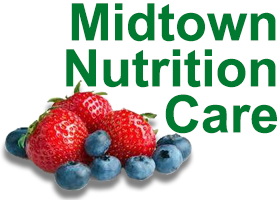CHOLESTEROL
Cholesterol is a waxy substance that our bodies use to make hormones, to form cell membranes, and to provide other essential functions. However, elevated levels of certain kinds of cholesterol are bad for your heart and overall health status. Here is more information about what your cholesterol numbers mean and how you can change them.
TYPES OF CHOLESTEROL
There are two main types of cholesterol – High Density Lipoprotein (HDL) and Low Density Lipoprotein (LDL).
HDL cholesterol acts like a vacuum cleaner which attaches itself to bad cholesterol and then removes it from your body. When HDL levels are high it is a health benefit. HDL cholesterol is therefore called “good cholesterol”.
LDL cholesterol, or “bad cholesterol”, deposits cholesterol within our arteries, which can lead to clogged or blocked blood vessels. Clogged or blocked blood vessels are one of the main causes of heart attack and stroke.
WHAT YOUR CHOLESTEROL NUMBERS MEAN
The desirable ranges for cholesterol are:
For HDL, the goal is to be above 40 mg/dL for men, and above 50 mg/dL for women.
For LDL, the goal is usually below 130 mg/dL.
HOW TO IMPROVE YOUR CHOLESTEROL PROFILE
There are lifestyle changes that you can make to improve your cholesterol profile. You can raise your good (HDL) cholesterol and reduce your bad (LDL) cholesterol. Here are some ways to do that.
To raise HDL cholesterol:
– Quit smoking.
– Increase exercise. Even a modest, consistent, increase in physical activity – like 30 minutes a day, a few times per week, can be helpful.
– Replace most of your saturated fat intake with mono-unsaturated fats and poly-unsaturated fats, which are found in foods like nuts, avocados, olive oil and sunflower oil.
To lower LDL cholesterol:
– Increase dietary fiber. Fiber acts like a sponge and mops up excess LDL cholesterol and removes it from the body. Dietary fiber is found in whole grain products, such as whole grain breads and pastas, oatmeal, beans, fruits and vegetables. Aim for a minimum of 25-35 grams of fiber per day.
– Reduce your body weight if you are overweight. Even a 5-10% reduction in weight can improve your cholesterol profile.
– Decrease intake of foods high in saturated fats, which are found in fried foods, creamy/greasy foods, butter, full fat cheeses, bacon, sausage and coconut. Aim to keep saturated fat intake below 20 grams per day.
